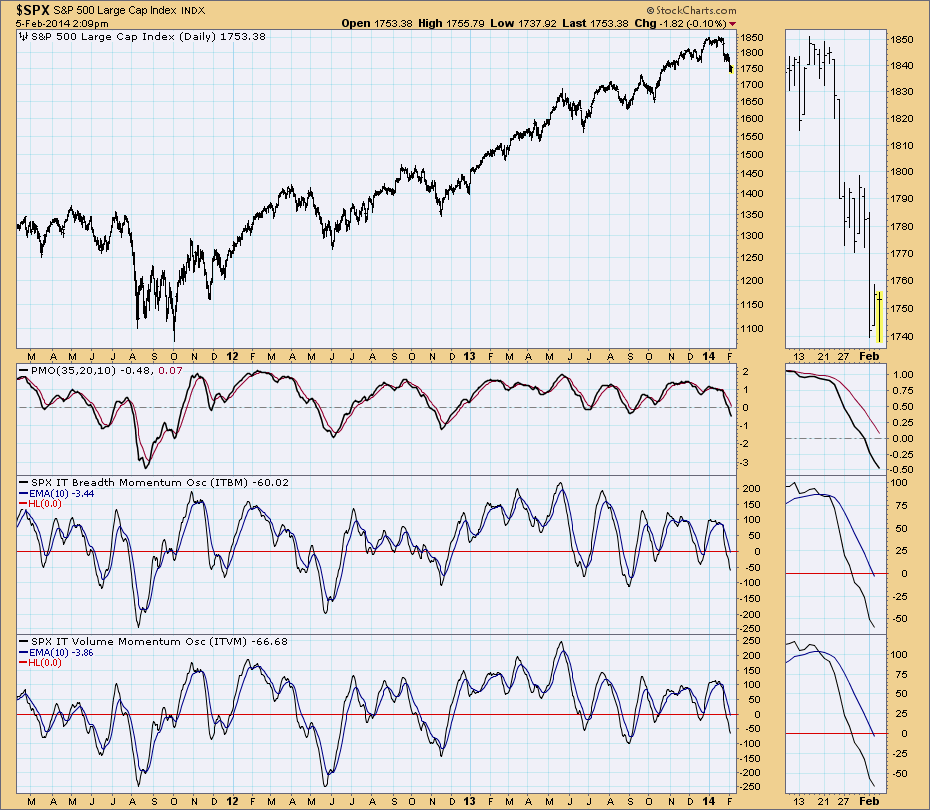|
|
Table of Contents
DecisionPoint Intermediate-Term Volume Momentum Oscillator (ITVM)
Introduction
The Intermediate-Term Volume Momentum Oscillator (ITVM) was developed by Carl Swenlin to give a new perspective of volume similar to that offered by the ITBM (IT Breadth Momentum) Oscillator on breadth.
Calculation
The ITVM is derived from the McClellan Volume Oscillator, which itself is calculated the same way as the McClellan Advance-Decline Oscillator, but using a ratio of Advancing Volume to Declining Volume instead of Advances and Declines. Specifically, subtract NYSE Declining Volume from Advancing Volume, then divide the result by NYSE Total Volume. Next, multiply that result by 1000 in order to work with whole numbers:
((Adv Vol - Decl Vol) / Total Vol) * 1000
The rest of the calculations are identical to those of the McClellan Oscillator and ITBM: add the daily McClellan Volume Oscillator (Ratio-Adjusted) to the daily 10% exponential average (Ratio-Adjusted), then calculate a 20-day EMA.
Interpretation
The ITVM is a barometer of volume. The absolute value indicates how overbought/oversold the market is. Direction is most important because it indicates whether the market is getting stronger (rising) or weaker (falling). The best condition is for the ITBM to be rising above its 10-EMA, and the worst is falling below its 10-EMA. It is extremely negative if the ITBM tops below its 10-EMA and below the zero line.

ITVM on StockCharts.com
The ITVM is a market indicator and therefore available on StockCharts.com as a collection of indexes - i.e., ticker symbols that start with an “!” character. To see those indexes, you can search the “Symbol Catalog” for the phrase “ITVM” (or just click here).
The ITVM is also featured in the DecisionPoint Market Analysis Chart Gallery tool. Click here to see that tool.
Conclusion
The ITVM is an intermediate-term indicator that gives a different perspective of breadth than the shorter-term McClellan Volume Oscillator. It can also be used to notify chartists whether negative McClellan Volume Oscillator readings should be taken seriously.
